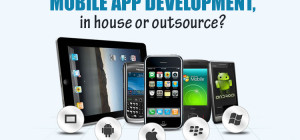Going by the reports gathered from WHO, there are more than 200 million adults of varying ages that suffer from some kind of disability or physical challenges in order to attain their daily duties in most difficult manner. However, it doesn't signify that they lack the latest technological advancements as they as well use handheld devices for reasons with some being critical of them.
As a mobile app developer considers app audience, they naturally come to think of these disables as well. No matter they are in minority or not, but these are surely users with unique needs for user experiences. Thus, each major mobile OS platform released a few guidelines for the convenience of physically challenged users offering them hardware along with software experiences in the best manner.
Now the mobile developers unwilling to implement these guidelines unfailingly and desire covering disabled audience sincerely in wider sense, then follow these tips:
Types of Disability
There are four major types of disability in general.
- Visual: Including impaired vision, blindness - full or partial, color-blindness
- Hearing: Partial or complete deafness
- Motor Inability: It contains the defects in the control over moving organs like hands, legs, etc. There is an inability to use mouse or another operating method, sluggish responses, lack of fine motor control in activities
- Cognitive: Including poor learning, impaired memory, unable to focus on voluminous information
As a mobile app developer if you are keen on addressing accessibility issues for the app users who are dealing with the above-mentioned disability, then there will be sure some difficulty to address their unique requirements in your app development without distracting the user experiences for the ordinary users.

Standardize Web or Mobile Content Accessibility
Addressing accessibility issues, Apple Store and Google Play marketplaces published various guidelines and they can be summarized in this manner.
App Content Should Be Perceivable:
There are many ways to give access to the app content to the disabled users with the availability of hardware and software capabilities and advancements. Thus, for the blind users, it is easy to convert textual content into voice/speech with the use of software capabilities. Also there is software that describes the image content in audio formats as this way physically challenged users get to enjoy photos in Facebook updates.
Operable Hardware:
Disabled mobile users with visual, motor or cognitive imparity doesn't get to use mobile devices in the best manner. Thus, the major number of handheld devices comprise of additional hardware along with software (OS) components and inbuilt components designed mainly for disabled users.
This way, mobile app developers must be adept in the way to leverage their features and functionality as well as make operating comfortable for physically challenged users. Like, you can use keyboard as this way content can be consumed slowly as well as use Siri-like voice recognition software in order to issue commands.
Comprehensibility:
It's vital that mobile app developers come up with app content and app interactions which can be easily understood and should operate in the unsurprising manner. Like, in case of colorblind users, they can avoid colors in order to bring in focus the major points or contexts as well as must give the right alternatives.
Robustness:
Maximizing the compatibility with present and next user tools, mobile developers get to offer the most exceptional user experiences.
Precautions for the Mobile App Programmers
In case mobile developers think of building accessibility features as a barrier to create striking and appealing mobile applications for outstanding user experiences, then they are at mistake.
There are numerous tech alternatives addressing the requirements of disabled users sans compromising with the mobile app robustness. For instance:
- Other options can be used instead of colors to differentiate content and other UI components for the colorblind users who are just 1 in 12 persons in the average population.
- For the contrast ratio, developers need following the mobile OS guidelines that prefer 4 to 1 ratio between the content and background.
- Boundaries and visual labels must be clearly defined in order to ease interactions with UI components.
- Eliminate the default focus state of browsers and UI screens and offer your custom setting as you code the styles for the mobile app UI in order to make life less difficult for disabled.







